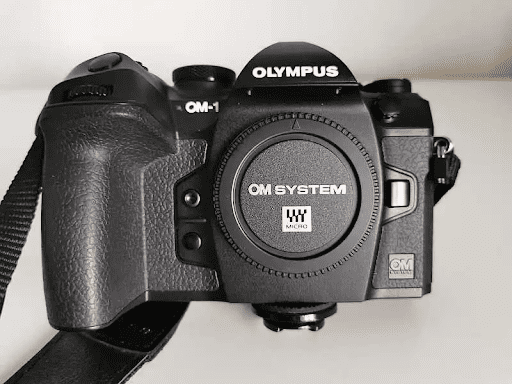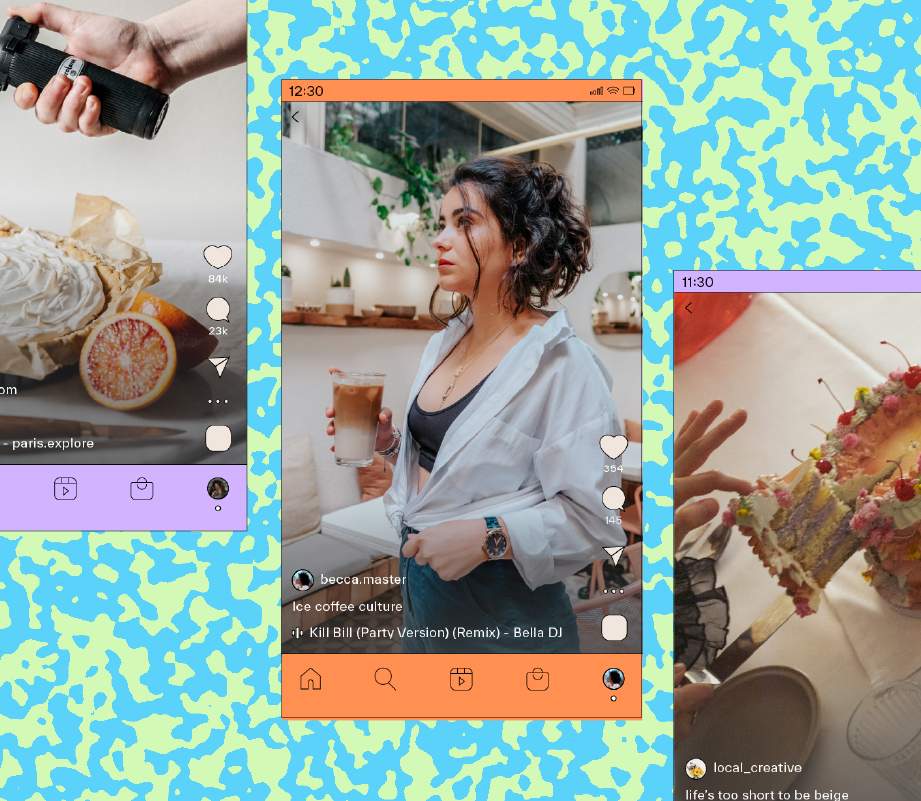Video has become one of the most effective ways to engage audiences and achieve results on social media. From short-form clips to live streams and interactive presentations, social media video marketing offers multiple opportunities to build trust, showcase value, and encourage action.
This article will guide you through the essentials of social media video marketing, explain why it matters, highlight the types of videos that perform best, share proven strategies, and introduce the tools you need to create impactful video content.
What is social media video marketing?
Social media video marketing is all about using videos to promote your brand, connect with your audience, and generate business results on platforms like Instagram, TikTok, LinkedIn, YouTube, and Facebook.
Instead of just posting static images or text updates, you use video content to capture attention, tell stories, and showcase your product or service in a way that feels more engaging.
Think about it this way: when you scroll through your feed, what grabs your attention faster, a long block of text or a quick, eye-catching video? Exactly. Video gives you the chance to deliver your message in a way that people actually want to watch and share.
(Source)
With social media video marketing, you can:
- Show off your product in action.
- Share quick tips or tutorials.
- Go live and connect with your audience in real time.
- Build trust through testimonials and behind-the-scenes clips.
At its core, social media video marketing is about creating content that not only entertains but also informs and inspires your audience to take action.
Why social media video marketing matters
Video isn’t just another type of content on social media; it’s the one your audience actually wants to see. Here’s why it matters for you:
1. People engage more with video:
When you post a video, you instantly increase your chances of getting noticed. Unlike static posts that people can scroll past, videos make them stop, watch, and often interact. A well-created video can create curiosity, trigger emotions, and encourage viewers to comment or share.
The same holds true when you’re sharing presentations. Storydoc research shows that decks with video are read 37% longer and see 17% higher CTA click-through rates.
That kind of engagement doesn’t just improve your numbers, it builds community around your brand. And the more people engage with your video, the more the algorithm rewards you with extra reach.
2. It helps you tell your story better:
With video, you can combine visuals, voice, and emotion to deliver a message that connects. Imagine explaining how your SaaS tool works—would you rather write 500 words or show a 30-second demo? With video, you can simplify complex ideas, show real-world use cases, and even add personality to your brand.
That’s why storytelling through video works: it creates an experience, not just a message. When your audience feels like part of the story, they’re more likely to remember you and take action.
3. It builds trust faster:
When people see your face, hear your voice, or watch your product in action, you remove the distance between you and them. Suddenly, you’re not just a brand logo; they see the human side.
A testimonial video, a casual behind-the-scenes clip, or even a quick “hello” from your team can make your audience feel like they know you.
4. Social platforms favour video:
Every major platform, from TikTok and Instagram to LinkedIn and YouTube, is pushing video front and center. The reason is simple: video keeps people hooked longer, which is exactly what these platforms want.
That means when you post a video, you’re giving the algorithm what it’s looking for. As a result, your chances of reaching a wider audience go up, without necessarily spending a single dollar on ads.
Types of videos that perform well on social media
Not every video works the same way on every platform. Here are the main types of videos that consistently perform well:
1. Short-form videos (Reels, TikTok, Shorts):
If you want quick attention and high reach, short-form is your best friend. These short clips, usually under 60 seconds, are designed for fast scrolling and instant entertainment. The advantage of short-form video is that you don’t need a big production budget; you just need creativity and timing.
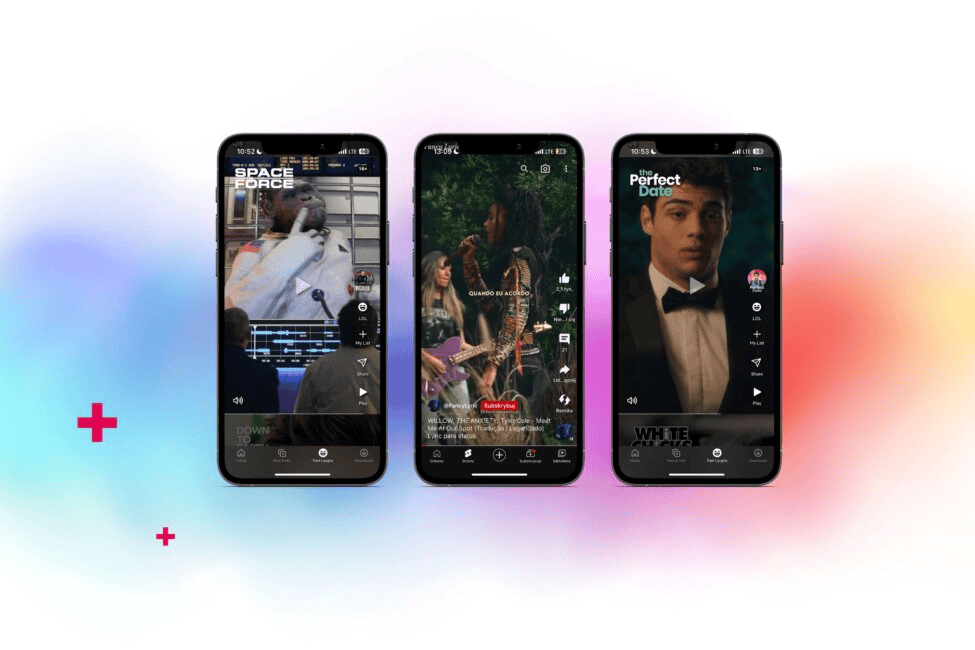
(Source)
On TikTok and Instagram Reels, jumping on trending sounds or formats can boost your visibility. On YouTube Shorts, even a small brand can compete with bigger players if the content is engaging.
2. Live videos:
Going live is one of the most powerful ways to build a real-time connection. Whether you’re hosting a Q&A session, launching a new product, or giving your audience a preview of your work, live video creates urgency; people show up because they don’t want to miss out.
You can answer questions directly, handle objections on the spot, and show that your brand is approachable. Plus, platforms like Facebook, Instagram, and LinkedIn often send notifications when you go live, giving you a built-in boost in reach.
3. Explainer/product demo videos:
Some products, especially SaaS tools, are tough to explain with just text or images. That’s where explainer videos perform. In a minute or two, you can walk your audience through what your product does, how it solves their problem, and why they should care.
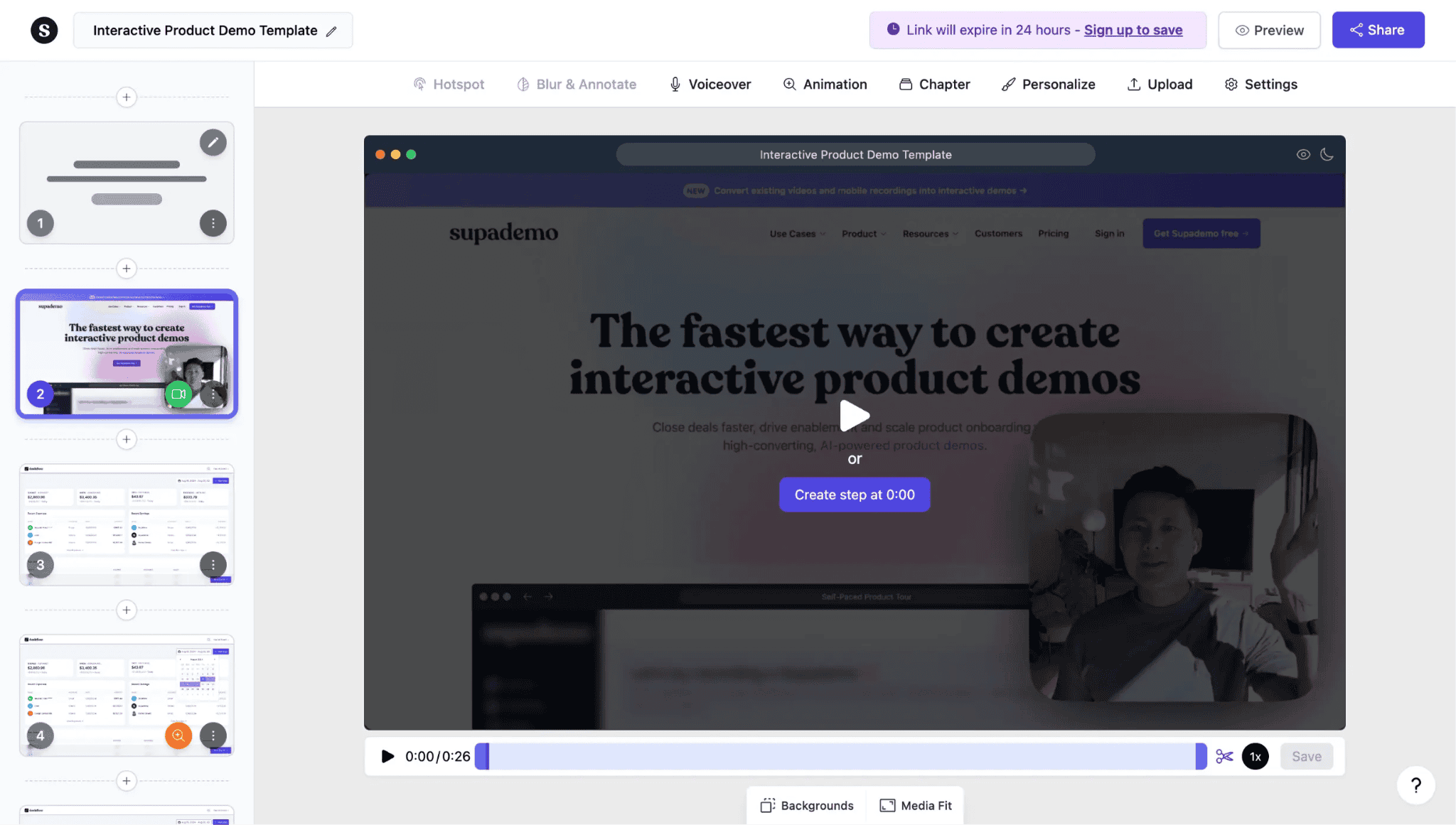
(Source)
These videos are perfect for YouTube (since people actively search for “how it works” content) and LinkedIn (where decision-makers are looking for solutions).
For example, instead of saying “our software has automation,” show how it saves a user three hours of manual work. That makes the value clearer.
4. Behind-the-scenes content:
A behind-the-scenes video could be as simple as showing how you prepare for a product launch, what your office culture looks like, or how your team collaborates. It doesn’t need to be professional—in fact, the more natural it feels, the better.

(Source)
This type of content works well on Instagram Stories, Reels, and even TikTok, where authenticity beats high production.
5. User-generated content (UGC) & testimonials:
Sometimes the most convincing video about your product isn’t the one you make—it’s the one your customer makes. UGC and testimonials act as powerful social proof.
When potential customers see real people using and enjoying your product, it feels authentic and relatable.
You can encourage UGC by running challenges, offering incentives, or simply asking your community to share their experiences.
Once you have it, repurpose that content into ads, Reels, or website assets. Platforms like TikTok and Instagram perform well on UGC, while LinkedIn is great for professional testimonial clips.
Pro tip: Don’t post the same video everywhere. TikTok is trend-driven, LinkedIn leans toward thought leadership, Instagram prefers Reels, and YouTube rewards depth. When you customize your video type to the platform, your chances of success shoot up.
Proven social media video marketing strategies
Creating videos is only half the work—knowing how to use them strategically is what generates real results. Below are some proven strategies that can help you maximize the impact of your social media video marketing efforts:
1. Start with storytelling, not selling:
Audiences are engaged by stories more than they are by sales pitches. A well-structured narrative allows you to highlight your brand values, demonstrate your mission, and connect emotionally with viewers.
For example, instead of simply promoting features of a SaaS product, you could tell the story of a customer who overcame a specific challenge, such as managing finances through personal loans, by using your solution. This approach not only makes your content more memorable but also positions your brand as relatable and trustworthy.
2. Optimize for each platform:
Every platform has its own set of requirements and audience expectations. A video that performs well on TikTok may not have the same effect on LinkedIn. Consider elements such as aspect ratios, ideal video length, caption use, and tone.
On YouTube, long-form educational content can be highly effective, whereas Instagram and TikTok perform well with concise, engaging clips. By customizing each video to the platform, you ensure that your message is delivered in the most impactful way possible.
3. Capture attention within the first three seconds:
Viewers decide almost immediately whether to continue watching or scroll away. To overcome this challenge, begin your videos with a strong hook—whether that is a thought-provoking statement, a striking visual, or a question that addresses your audience’s pain point.
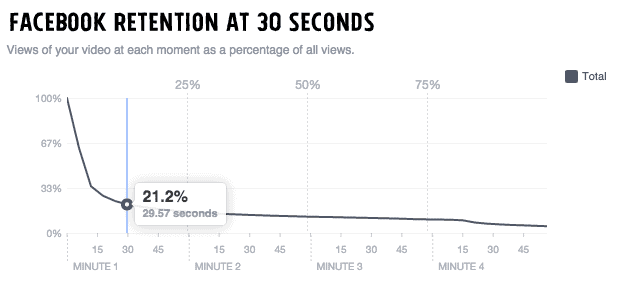
(Source)
If the first few seconds fail to capture interest, the rest of your message may never be seen. This is particularly critical on short-form platforms, where attention spans are limited.
4. Use subtitles and text overlays:
Since a significant portion of users watch videos without sound, adding subtitles ensures that your message is still communicated clearly.
Text overlays can also emphasize key points and make your video more accessible to wider audiences, including those with hearing impairments. Beyond accessibility, subtitles increase retention rates, as viewers are able to follow along more easily even in noisy or silent environments.
5. Leverage analytics to refine your approach:
Publishing videos without tracking performance is a missed opportunity. Platforms provide valuable data such as average watch time, engagement rates, click-throughs, and audience demographics.
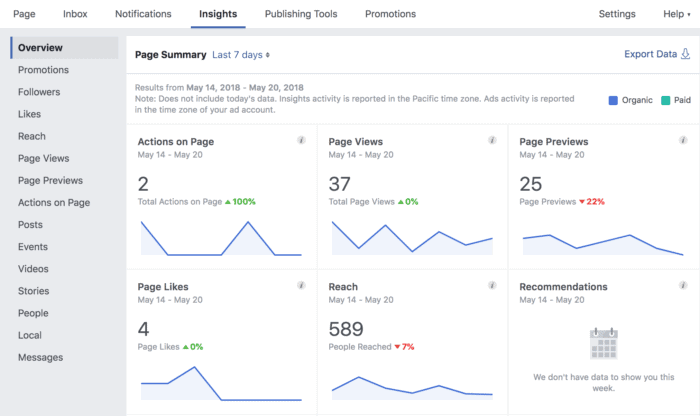
(Source)
By analyzing these metrics, you can identify what resonates most with your audience and adjust your content strategy accordingly. For example, if shorter videos are driving higher engagement, you may want to repeat that format more frequently.
6. Repurpose content for greater reach:
A single video can generate multiple pieces of content when used thoughtfully. For example, a full-length webinar can be edited into shorter highlight clips for social platforms, while a detailed product demonstration can be transformed into a quick teaser for audience engagement.
Repurposing not only extends the lifespan of your content but also helps you maintain brand consistency across different channels. It also opens up opportunities for backlinks, since a single piece of video content, when turned into blogs, infographics, or guest posts, can attract links from multiple sources.
This strategy ensures you remain visible and active without the pressure of producing entirely new material each time.
7. Incorporate user-generated content (UGC):
UGC builds credibility in ways branded content often cannot. Encouraging customers to share their experiences and showcasing those videos on your channels highlights authenticity.
It signals that real people use and trust your product, which has a stronger influence on potential buyers than refined brand messaging alone. Featuring UGC also builds community and strengthens your relationship with existing customers.
8. Use paid promotion wisely:
Organic reach is powerful, but pairing it with targeted paid campaigns can accelerate results. Short, engaging videos are highly effective for retargeting campaigns, reminding viewers of products they have already interacted with.
A/B testing various ad creatives and formats allows you to determine which content delivers the best return on investment, ensuring that your ad spend is used efficiently.
9. Focus on consistency over virality:
Many brands focus on viral content, but sustained results come from consistent publishing. Posting regularly builds trust with your audience and helps establish your brand as a reliable source of content.
Over time, this consistency strengthens visibility in algorithms and nurtures long-term engagement—far more valuable than one-off viral moments.
Tools to elevate your social media video marketing
Having the right tools can make the difference between a video that looks basic and one that generates results. From creation to publishing and performance tracking, these tools help you streamline your workflow and maximize impact.
1. Video creation and editing tools
Predis.ai – Predis.ai is an all-in-one AI-powered tool for creating, scheduling, and analyzing social media content. Turning simple text prompts into engaging videos, posts, carousels, product videos, and ad creatives.
Designed for efficiency and scalability, it is ideal for marketers, agencies, and brands looking to streamline their entire social media workflow without compromising on quality or creativity.
Canva – Canva provides an easy-to-use drag-and-drop interface with hundreds of customizable video templates. It allows you to add animations, text overlays, and stock footage, making it ideal for social media videos without a heavy editing experience.
InVideo – InVideo provides a comprehensive suite of templates, stock media, and AI-powered tools for accelerated video creation. It’s particularly useful for marketers who want to produce professional-quality videos efficiently.
2. Social media scheduling and publishing tools
StoryChief – StoryChief allows you to schedule and publish video content across multiple platforms simultaneously. It also offers team collaboration features, making content planning and approval efficient.
Loomly – Loomly provides a calendar-based content management system for planning, scheduling, and publishing videos. Its built-in analytics and post-optimization suggestions help maximize engagement.
Hootsuite – Hootsuite enables team collaboration, post scheduling, and performance tracking across multiple social media channels. It’s particularly useful for brands managing multiple accounts.
3. Analytics and performance tracking tools
VidIQ – VidIQ is built for YouTube analytics. It provides keyword research, SEO suggestions, and competitor benchmarking to improve video visibility and reach.
TubeBuddy – TubeBuddy is another YouTube-focused tool that supports SEO, thumbnail A/B testing, and performance tracking. It’s ideal for creators looking to grow their subscriber base strategically.
Native Platform Analytics – Instagram Insights, TikTok Analytics, and YouTube Studio offer essential metrics like watch time, engagement, and demographics. They are crucial for understanding what content resonates most.
4. Collaboration and management tools
Trello – Trello uses visual boards to organize video projects, assign tasks, and track progress efficiently.
Gepard – Gepard offers an AI product data management tool that centralizes, enriches, and distributes product data across multiple channels. It helps marketing teams maintain consistent and accurate information, which can then be repurposed for product videos, social media campaigns, and other promotional content.
Asana – Asana allows teams to manage workflows, deadlines, and responsibilities from concept to publishing.
Salesflare (CRM Tool) – Salesflare is a CRM that integrates video engagement data with your sales workflow. If you’re looking to choose a CRM that goes beyond basic contact management, Salesflare is a strong option. It tracks viewer interactions with video content, helping your team follow up with leads more effectively and personalize outreach
5. AI-powered video tools
Synthesia – Synthesia lets you create videos with AI avatars, ideal for tutorials, training, and multilingual content.
Descript – Descript offers text-based editing, transcription, and audio enhancement, streamlining the video editing process.
Pictory – Pictory converts long-form content into short, shareable videos, helping marketers maximize ROI.
These tools are also useful for AI agent developers looking to create video demos or educational content efficiently.
Final Thoughts on Social Media Video Marketing
Social media video marketing is no longer optional; it’s an essential way to connect with your audience, communicate your message, and collect meaningful results. By understanding the types of videos that perform best, applying proven strategies, and using the right tools, you can create content that engages, informs, and inspires action.
Consistency and data-driven optimization are key to turning your videos into a powerful driver of growth for your brand.



